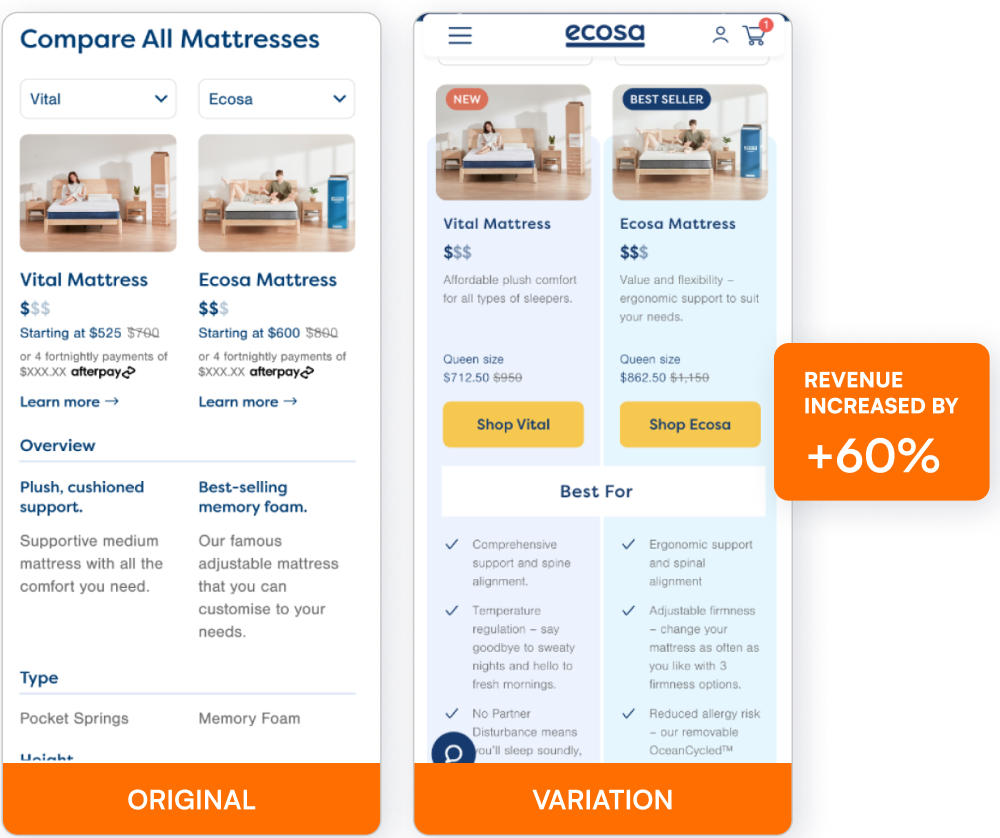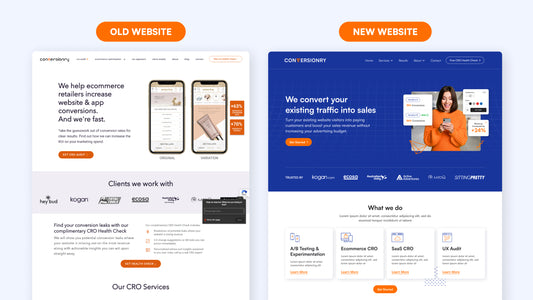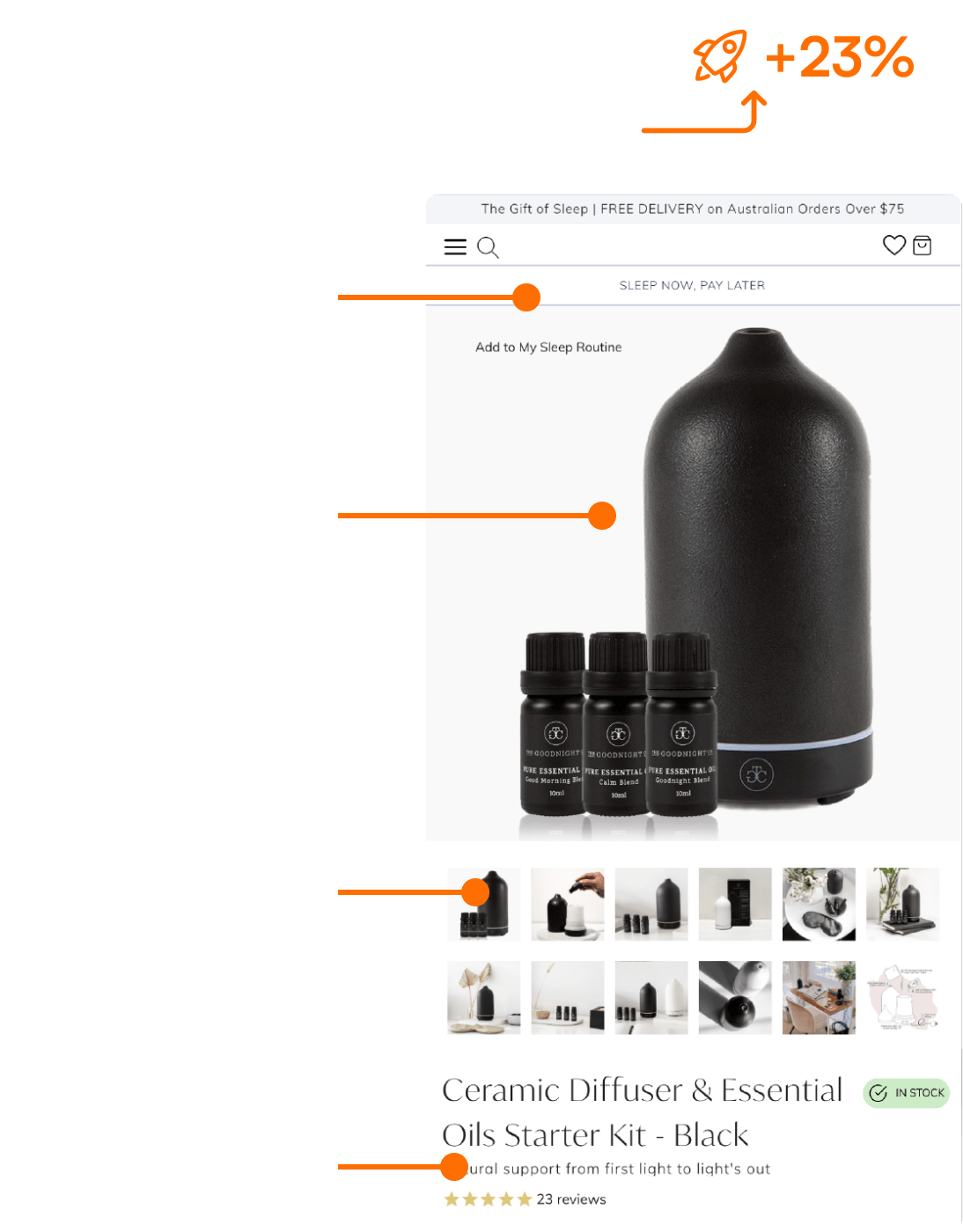Conversion rate optimization (CRO) is implementing various tactics to increase the percentage of visitors who convert (take a desired action) on your website. Conversions can include purchasing, signing up for a free trial, booking a demo, subscribing to a newsletter, or creating an account.
Optimising conversion rates on your website can directly impact your bottom line. Unlike other marketing disciplines like search engine optimization (SEO), which usually takes months to show results, CRO tactics can prove effective almost immediately.
Conducting a conversion rate optimization audit is essential to fully understanding how to maximise your conversion rates. This audit will help you identify areas for improvement and create a strategy to enhance your site's performance.
Understanding Conversion Rate Optimization
To calculate the conversion rate for any page or your entire website, divide the total number of conversions by the total number of visitors during a specific period, then multiply by 100 to get a percentage.
Once you've calculated your conversion rate, you might wonder if it's a good number. Comparing yourself to industry benchmarks can help you understand your performance. For instance, the average conversion rate for B2C eCommerce businesses across all industries was 2% in the first quarter of 2023. In the B2B space, average conversion rates range from just over 1% for SaaS companies to over 7% for legal services.
Benefits of Conversion Rate Optimization
Website conversion rate optimization benefits everything from marketing costs to sales. Let's explore these benefits in detail:
- Lower Cost Per Acquisition (CPA): CRO can reduce your overall CPA because you won't have to invest in as many channels (especially paid ads) to drive conversions.
- Greater Understanding of Customers: CRO involves thorough research that helps you better understand your audience and what motivates them to take action.
- Improved Competitive Advantage: CRO helps your site's pages drive more results than your competitors' non-optimized content.
- Increased Sales and Revenue: CRO gets more users to convert, which can generate more sales and boost your revenue.
- Lower Effort Activity: CRO leverages existing content to convert more users, so you don't have to start from scratch.
9 Conversion Rate Optimization Techniques
Let's dive into some concrete ways to boost conversion of website users.
- Tailor Your Messaging to Your Audience
Understanding your audience is the starting point of conversion rate optimization. This knowledge allows you to tailor your messaging to their pain points and needs. For example, suppose your analysis reveals that your audience is primarily between the ages of 35 and 44, works full time, and lives in a household with four or more people. In that case, your messaging should focus on the needs of working parents.
Conduct surveys to learn more about your existing customers. This can give you immediate feedback about your website. You can add a small survey that pops up when a customer is about to leave your site or send one via email along with their purchase confirmation. To increase survey completion, make it short and straightforward, for example, "Take this one-minute survey."
- Align Your Content with What Users Expect
Your web pages need to align with what your audience wants to drive conversions. Consider how they arrived on the page you want to optimise. If they click on an ad, users will expect a landing page consistent with what they saw in the ad. For instance, the landing page for an ad that promises a 50% discount on a specific product should showcase that product and the discount. Any deviation may confuse the visitor and cause them to leave.
For more detailed insights, refer to our guide on maximising Shopify conversion rates.
- Conduct A/B Testing
Using A/B testing (also called split testing) on your pages helps you quickly identify what does and doesn't encourage conversions on your website. A/B testing compares two versions of a webpage that differ by a single element, such as a headline or a call to action (CTA).
Consider comparing a subheading with a broader appeal against one explicitly intended for working parents or test whether reducing the number of form fields will increase submissions. Other elements you can A/B test include images, body copy, and form placement.
For more information on running practical A/B tests, check out our guide on A/B testing.
- Apply What You've Learned from High-Converting Content
Analysing which pages have driven the most conversions allows you to see which tactics have worked in the past. Then, you can implement these tactics on other pages. Use tools like Google Analytics 4 (GA4) to do this.
You may learn that a particular page effectively drove a specific conversion type—such as booking a demo. Visit that page to identify which elements could be conversion drivers that can be applied to other pages. These elements might include compelling visuals, clear and concise copy, prominent CTA placement, actionable advice, no navigation bar, and conversational, jargon-free language.
- Prioritise Above-the-Fold Content
Prioritising above-the-fold content means focusing on the page elements that users immediately see without scrolling, which captures users' attention and encourages them to take your desired action. Here's how to optimise above-the-fold content:
- Use compelling, clear, and concise messaging that communicates the page's value proposition or central purpose.
- Place the primary CTA in a visible location.
- Use eye-catching, high-quality visuals.
- Allow for plenty of white space to ensure the page doesn't look cluttered.
For more tips on this, visit our eCommerce conversion rate optimisation page.
6.Form a Conversion Hypothesis
For more considerable product changes, create a specific hypothesis to test that helps you understand which improvements will substantially impact your conversions. Based on what you learn through user and product research, zero in on particular pages and site elements you can optimise to meet user needs better and boost conversions.
For example, if you see that time-on-page is low and bounce rates are high on a key landing page, gather more user insights to find out why. Maybe your messaging isn't resonating with your audience. Create a hypothesis: if we include use cases that are more relevant to our target audience, the conversion rate on this landing page will improve by 2%.
Or if your 'book a demo' page is converting poorly and users say they're unclear on the time commitment and logistics involved in the demo call, your hypothesis might be: if we add precise details located above the fold on how long the demo lasts and what it'll look like, twice as many users will book.
These hypotheses will form the basis of your A/B tests.
- Run A/B Tests
Once you've identified clear hypotheses, start the final part of your audit: launching A/B tests to evaluate their success and make data-informed CRO decisions. Set clear outcomes and goals to measure the success of your tests. Use an A/B testing tool to help you with setting up practical experiments. Once you've set up a test page and control page, split traffic between the two versions and let the experiment run until you have a critical mass of data to decide the winner.
- Implement Changes and Monitor Results
After determining the winner of your A/B tests, implement the changes across your site. Continuously monitor the impact on your conversion rates to ensure the desired improvements.
- Gather Feedback and Iterate
Collect feedback from users to understand their experiences and pain points. Use this feedback to make further improvements and iteratively optimise your site.
Conclusion
Conversion rate optimization is a powerful tool to enhance your website's performance and increase conversions. You can significantly improve your conversion rates by tailoring your messaging, aligning content with user expectations, conducting A/B tests, and applying insights from high-converting content. At Conversionry, we specialise in providing comprehensive CRO services to help you achieve your business goals.
For more information on our services, visit our eCommerce conversion rate optimisation pages, conduct a comprehensive CRO audit, and maximise Shopify conversion rates.
Let's work together to take your website's performance to the next level.
Partner with Conversionry, your trusted conversion rate optimisation agency, and see the difference a comprehensive CRO strategy can make.
For businesses in Sydney, explore our specialised conversion rate optimisation services. Feel free to contact us for a detailed consultation, and let us help you achieve your conversion goals.
Beat your competition to it!
Get the latest actionable conversion strategies delivered straight to your inbox!













